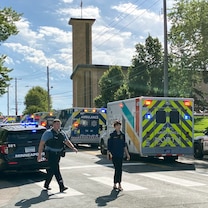LONDON -- The shooting down of multiple drones over Poland on Tuesday night into Wednesday came after months of sporadic violations of NATO airspace by Russian drones and other munitions.
The repeated incursions have prompted questions all along NATO’s eastern flank as to how allies should handle the threat of Russia’s long-range strike capabilities, which are continuously evolving with deadly effect during Moscow’s war in Ukraine.
Polish Prime Minister Donald Tusk said at least 19 Russian drones entered the country's airspace, of which at least three were shot down.
The country's military command described the violations as "unprecedented," saying they amounted to "an act of aggression that posed a real threat to the safety of our citizens."
Indeed, the incursions represent a major escalation in tensions along NATO's eastern border. Previous airspace violations have been sporadic, most often involving single drones or missiles. The mass entry of Russian craft on Tuesday night into Wednesday hinted at a new era in the standoff between Brussels and Moscow.
Current and former national defense officials from Baltic countries told ABC News that their countries were also taking steps to prepare for potential Russian drones over their territories. Those interviews took place prior to Poland’s action on early on Wednesday.
It is unclear whether Wednesday’s or other previous airspace violations were intentional. Russian and Ukrainian drones both routinely go off course due to electronic warfare measures employed by both sides.
But the Polish military on Wednesday accused Moscow of an "act of aggression." European Union foreign affairs chief Kaja Kallas said the incursions appeared to be "intentional, not accidental."
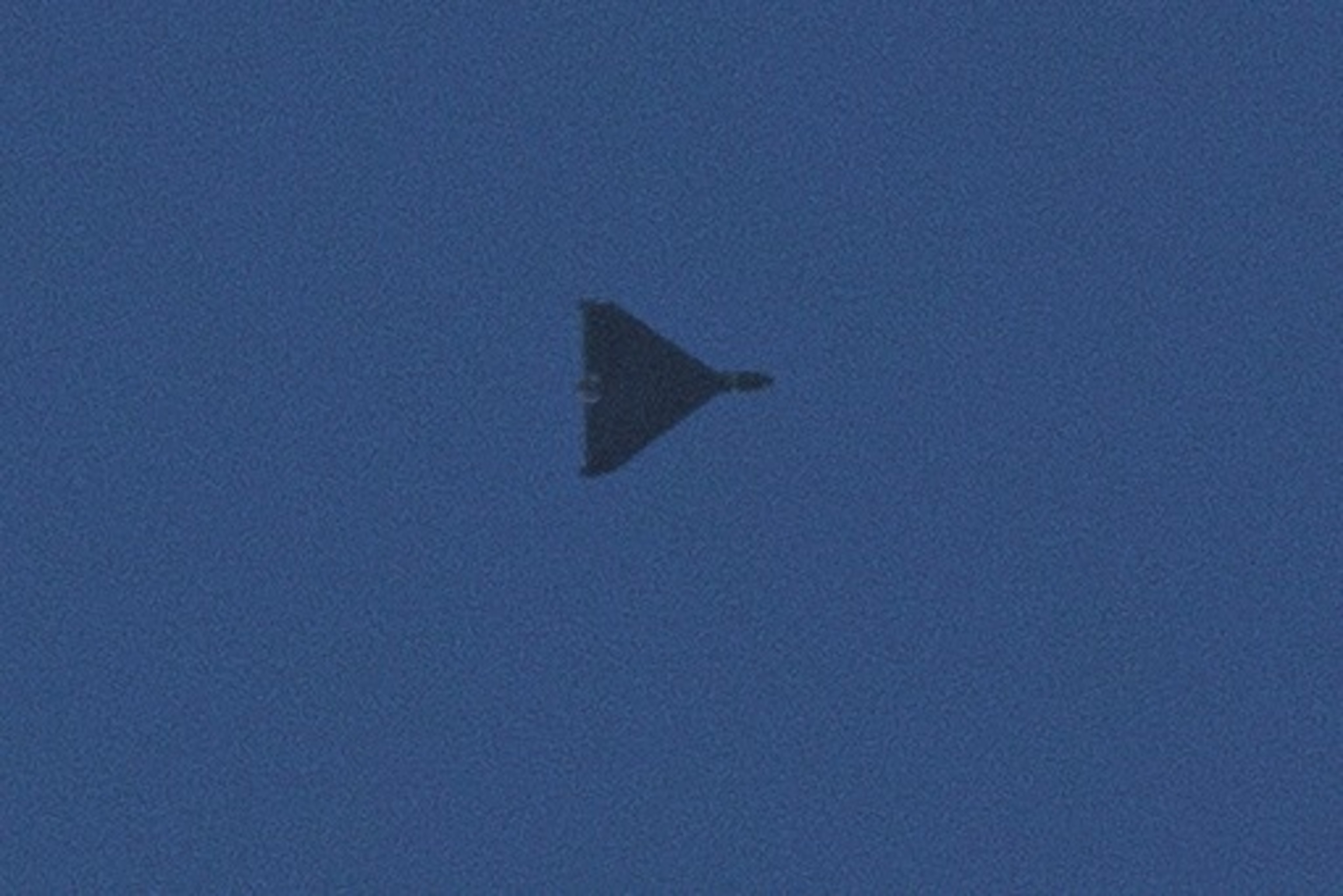
Lithuania was already "ready" to shoot down any more drones that enter its airspace, the country's defense minister told ABC News last month.
In July, two Russian Gerbera drones -- one of which was carrying more than 4 pounds of explosives -- crossed into Lithuania from Belarus, sparking a national inquest as to the country's readiness to safeguard its airspace.
Regardless, the violation prompted officials in Vilnius, the capital, to write to NATO requesting assistance in defending against Russian aircraft. Lithuanian Foreign Minister Kestutis Budrys said the situation was "a concern of all NATO," adding, "This is not just Lithuanian airspace, not just Lithuania's security -- it is NATO airspace, NATO security and also EU security."
Lithuanian Defense Minister Dovile Sakaliene told ABC News that the latest incidents prior to Wednesday's jogged a significant response.
"We changed our algorithm, we changed certain decision-making procedures to adapt them to make them more flexible and faster, we're changing our legislation, we have deployed additional forces close to our border," Sakaliene said.
"Currently, we are in a stance where we would be ready to shoot it down," the defense minister added when asked if Lithuania would be prepared to fire at drones violating the nation's airspace.
Asked if fellow NATO nations would start doing the same, Sakaliene said, "We are coming to that moment. Our legislation is going to be finalized very soon. Certain decisions have already been made and certain measures I'm hoping will be also employed by the alliance."
The government in Vilnius is already working with a NATO expert team, Sakaliene said, adding that she would raise the issue when meeting with NATO's supreme allied commander Europe -- U.S. Air Force Gen. Alexus G. Grynkewich -- this month.
Vilnius also took the decision to close its airspace along the border with Belarus until Oct. 1, coinciding with joint Russian-Belarusian military exercises planned through September.
NATO's porous flank
Lithuania is not the only NATO nation struggling to respond to such incidents. The remnants of Russian drones have been discovered in Romania and Latvia, while unidentified drones were already suspected of crashing in Poland.
Poland has also reported multiple violations of its airspace by Russian missiles.
Missile and drone violations have also occurred in neighboring Moldova, which is not a NATO member. And in May, Finland -- one of NATO's two newest members alongside Sweden -- alleged that two Russian aircraft violated its airspace.
Estonia last month reported a Ukrainian drone crashing and exploding on its territory. Estonian police said the drone was likely en route to attack targets inside Russia, with which Estonia shares a border. Tallinn blamed Russian jamming measures for the craft going off course.
A second Ukrainian drone crashed into the Russian portion of Lake Peipus, which forms part of the Estonia-Russia border.
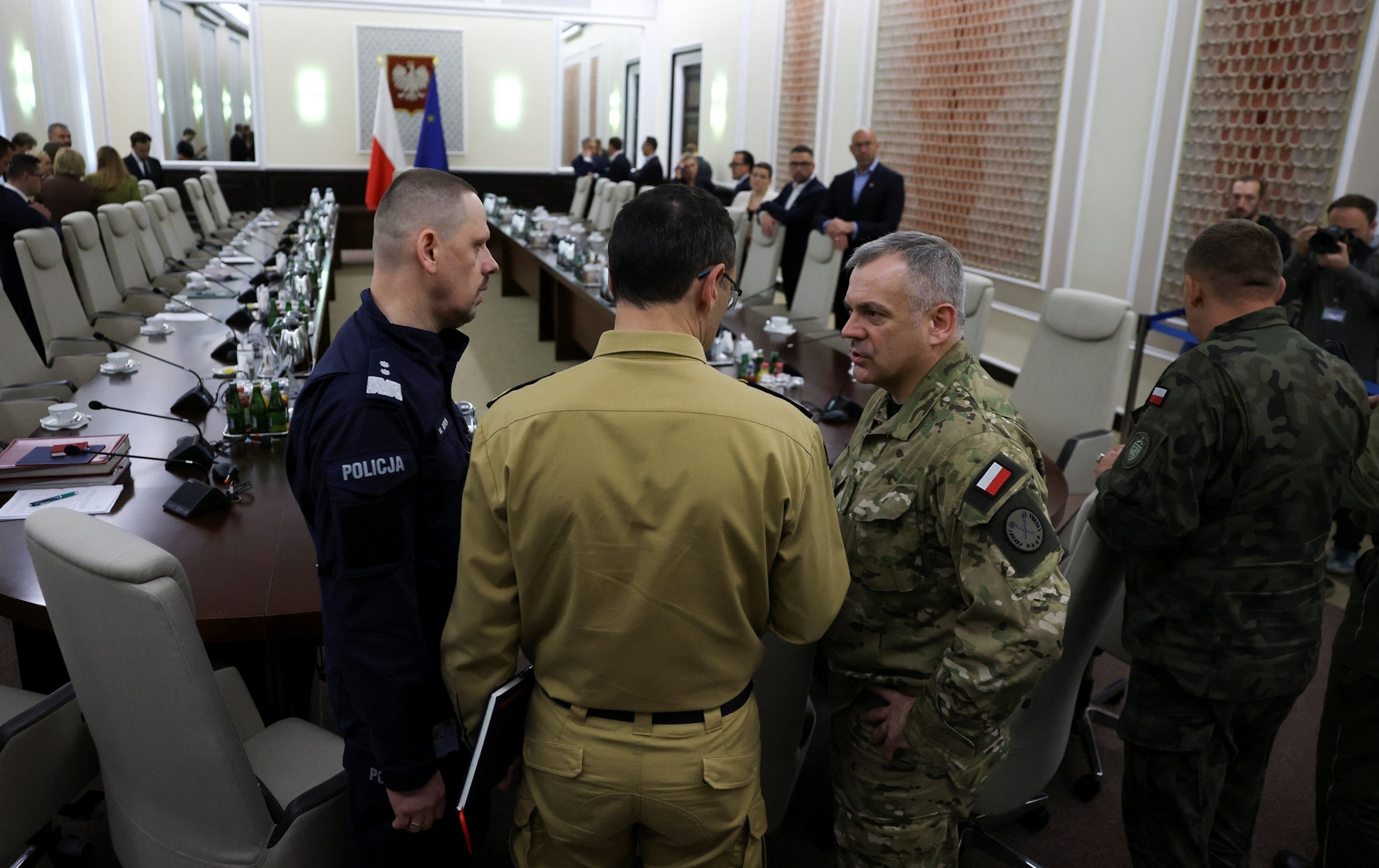
Russia has not explicitly threatened to use drones against nearby NATO nations. But officials in Moscow -- and nationalist, pro-Kremlin public figures -- have repeatedly hinted at Russian aggression against the Baltic states.
In April, for example, Russia’s Foreign Intelligence Service chief Sergey Naryshkin told RIA Novosti that "Poland and the Baltic republics are particularly aggressive, at least in words, they are constantly rattling their weapons."
In the event of a conflict, he continued, "damage will certainly be inflicted on the entire NATO bloc, but to a greater extent the first to suffer will be the bearers of such ideas among the political circles of Poland and the Baltic countries."
The Defense Ministry in Moscow denied targeting Poland in a statement released on Wednesday after the multiple incursions overnight.
Russia and Ukraine exchange massed drone and missile strikes on a nightly basis.
The NATO aircraft stationed along the alliance's eastern edge have been busy -- jets based in Poland and Romania are often scrambled to monitor ongoing strikes in western Ukraine, where Russian drones and missiles have hit targets within sight of NATO borders.
But some munitions have made it through into NATO airspace regardless. Allied governments have defended their decision not to shoot them down, citing potential danger to civilians and infrastructure on the ground.
After the drone incidents in Lithuania, NATO spokesperson Allison Hart said in post to X that the alliance "takes these incidents very seriously. We remain vigilant and ready to defend every inch of NATO territory."
Sakaliene spoke to ABC News via a video call during a visit to Kyiv, where she said she met with Ukrainian counterparts to explore what NATO nations can learn from Ukraine's nightly battles with Russian drones and missiles.
The defense minister said NATO is not standing still, despite its apparent hesitance to take down Russian munitions violating its airspace.
Recent incidents have highlighted apparent gaps in detection and decision-making procedures. Lithuania, Romania and Latvia have recently clarified their legislation to enable law enforcement and defense forces to shoot down drones entering their airspace.
Estonian Defense Forces spokesperson Maj. Taavi Karotamm told ABC News that the country's armed forces are allowed to "to engage hostile targets that have entered the Estonian airspace," both under Estonian law and under NATO's Integrated Air and Missile Defence rules of engagement.
Karotamm said that the shoulder-fired Polish-made Piorun missile and the French-made Mistral -- which can be mounted on vehicles or fired from a seated position -- are the most suitable weapons in the Estonian arsenal for shooting down drones like Shaheds. Heavy machine guns and electronic warfare measures could also be employed, he said.
The EDF has also already procured the IRIS-T medium-range air defence system -- which has proven its capabilities in Ukrainian hands -- plus "various radar systems," to be combined with long-range air defense and anti-ballistic missile systems, Karotamm said. "All this will form a multi-layer air defence system."
A 'low and slow' arms race
NATO nations are facing an arms race -- one in which Ukraine is leading the way, with the help of European and U.S. leaders. Kyiv's guidance will be key for NATO, Sakaliene said, given the country's vast and growing experience with Russian drone and missile attacks. But Moscow is tweaking its designs all the time.
"Regretfully, there is no silver bullet yet," Sakaliene said when asked how allies should respond.
"All nations, both those who are participating now directly in military actions and those who are just preparing, have not yet found a perfect solution," she said.
Kusti Salm, previously the permanent secretary at Estonia's Defense Ministry and now the CEO of defense company Frankenburg Technologies, told ABC News that the "biggest problem" facing Western nations is "the cost to kill ratio discrepancy that is so strongly in favor of Russia."
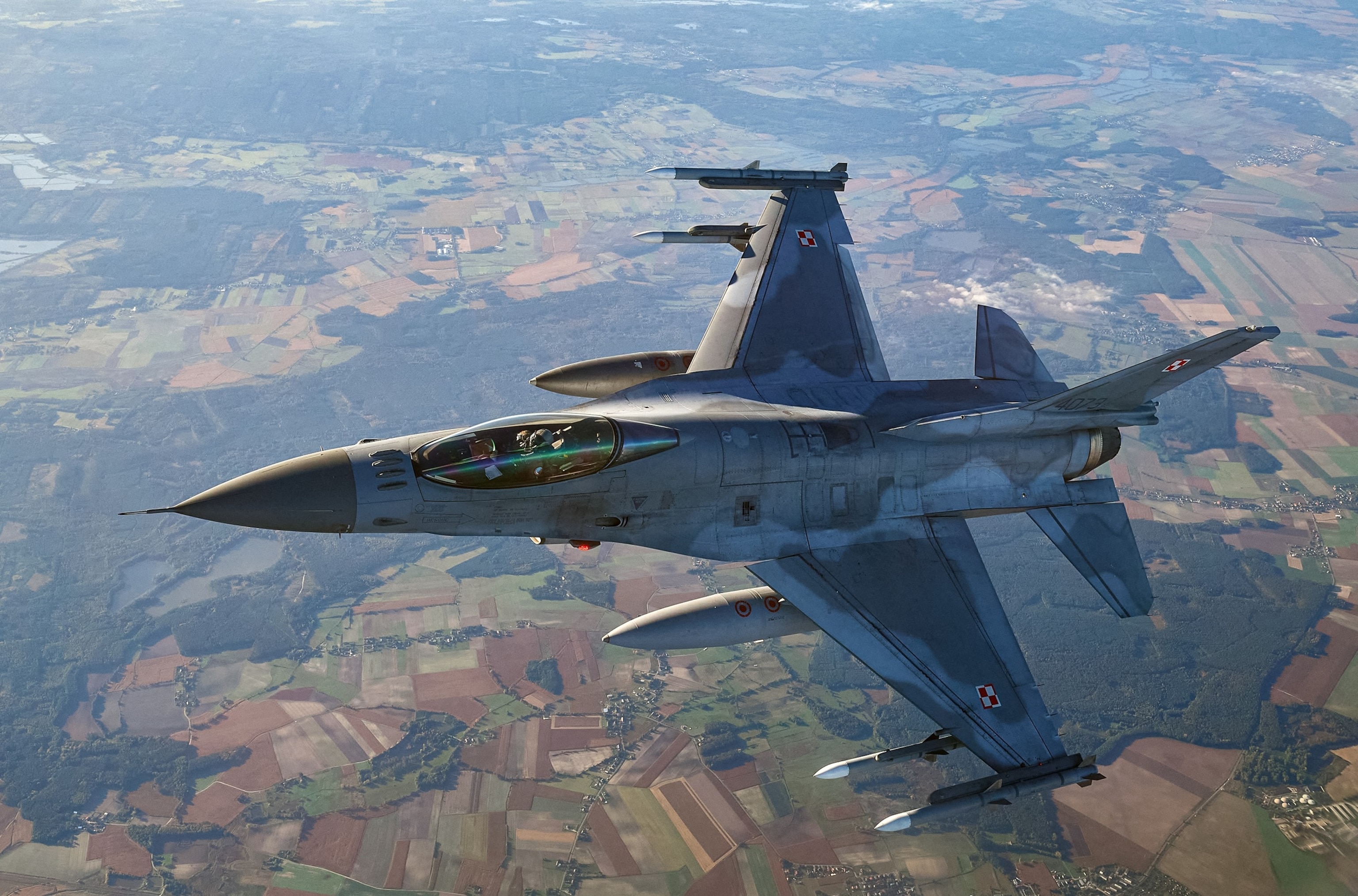
Various estimates for the cost of Russia's Iranian-designed Shahed strike drones -- and subsequent Russian variants known as the Gerans -- range from around $10,000 to $100,000. Gerbera decoy drones -- which are intended to distract defenders from the more destructive Shaheds or Gerans but can themselves also carry explosives -- are estimated to cost as little as $10,000.
Missiles fired by the U.S.-made Patriot system cost about $4 million each. IRIS-T interceptors cost $470,000 each.
The gap in NATO defenses offers Moscow a window of opportunity, Salm said. "This is why they are investing into low- and slow-flying drones, because there are no solutions for how to take it down at scale and at the price point that would be favorable for the defender."
"At some point, Russia will possess capabilities to shoot hundreds of thousands at us," Salm added. In 2022, Salm recalled, NATO officials described 100 Shaheds as a mass attack. "I think now what we need to call a mass is 100,000," he added.
Frankenberg is developing missile systems capable of downing drones at lower cost -- 10 times less than current methods, Salm said. The company wants its system to be able to defeat 97% of threats at ranges out to 2 kilometers -- around 1.2 miles.
For now, Salm said, NATO nations do not have the radar equipment, anti-air weapons or manpower to ensure full anti-drone coverage of their territories. "There's a technical challenge of tracking something that is flying low and slow," he said.
"And then there are also legal aspects," he continued. NATO nations can down drones over their territories, but "according to the rules of engagement that have been widely agreed in NATO, then it will be very difficult politically to tolerate -- to shoot them down over the urban areas, residential areas, over key national infrastructure."
Ukraine, unlike the Baltic states, is a large country with significant strategic depth, Salm said. "They tolerate hundreds of aerial targets in their airspace every day," he continued. Kyiv is also on a full war footing, with its government and population steeled against the damage and human losses that come with a major conflict.
"There would be zero nations in Europe or throughout NATO that would be able, as a country, to suffer these types of losses as the Ukrainians do," Salm said.
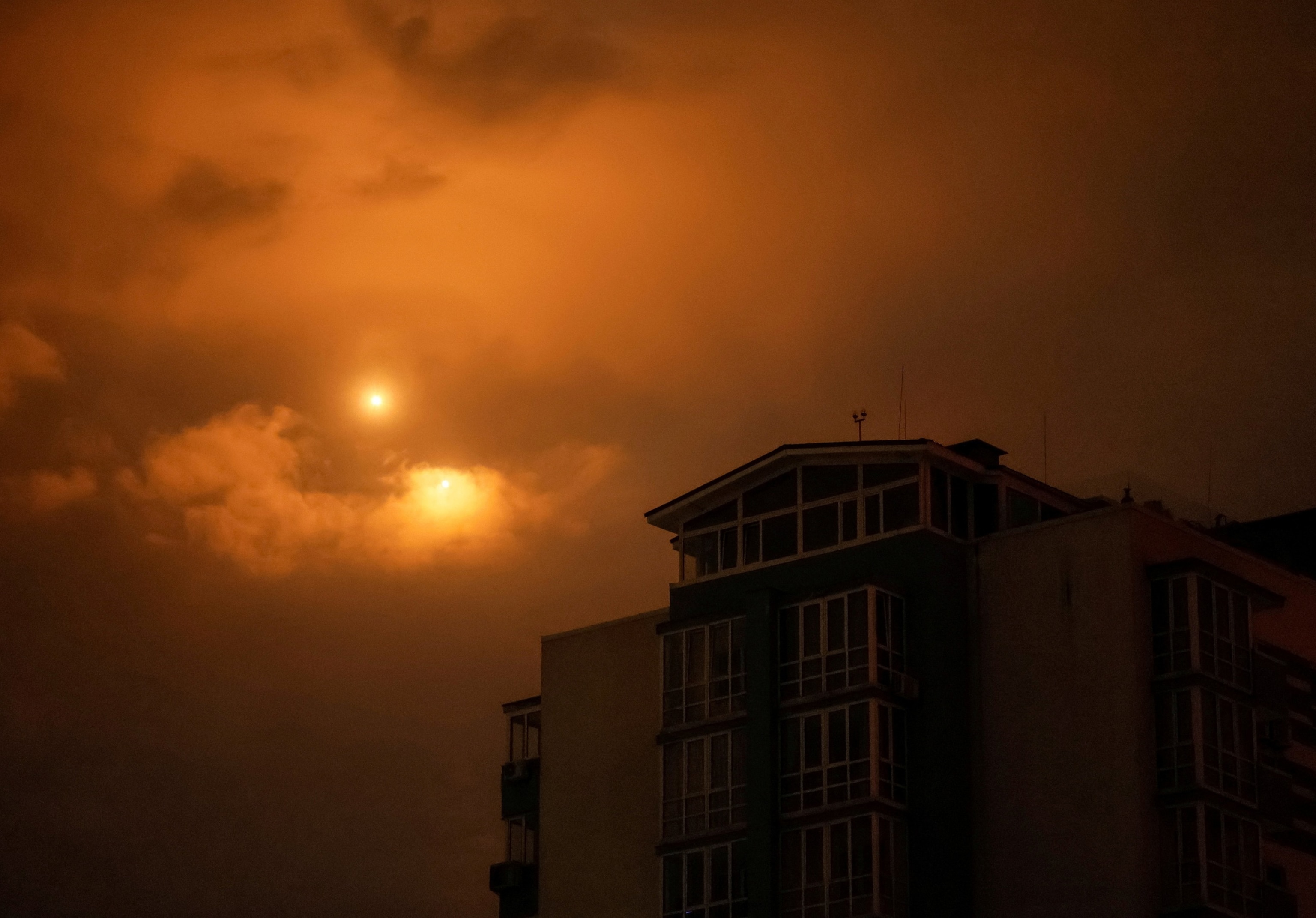
Russia's drone arsenal and reach have expanded exponentially since its invasion began in 2022. An estimate cited by the Atlantic Council think tank in July suggested Russia is producing some 5,000 long-range drones each month.
Europe is behind, Salm said. "It's a new chapter in the strategy of warfare and conventional deterrence is a little bit of a forgotten art, and definitely something that no European nations are ready to do right now," he said.
"This is why all this increase of defense expenditure and increased manufacturing are becoming at the forefront of all defense actions, because this is ultimately what guarantees victory and deterrence," Salm added. "Wars are fought in trenches, but they're won in factories."


